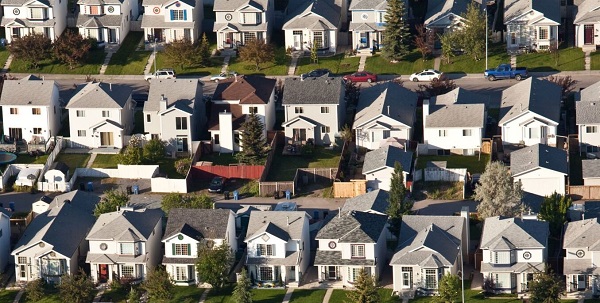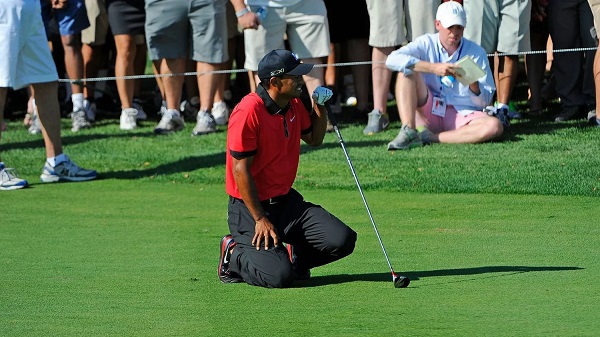Alberta
Back To Work! – Restaurants to open, kids “school” sports, and one on one indoor personal fitness will be allowed beginning February 8

From the Province of Alberta
Alberta is introducing a path forward for easing COVID-19 health restrictions, with clear benchmarks for hospitalizations. This will begin with step 1, with some restrictions easing on February 8
Easing of provincewide health measures will occur in steps based on COVID-19 hospitalization benchmarks.
These steps and benchmarks will provide a transparent approach to easing restrictions for businesses and individuals while protecting the health-care system.
Each step has an associated benchmark of hospitalized COVID-19 patients, including intensive care patients. Changes to restrictions will be considered once a benchmark is reached.
The hospitalization benchmarks are:
- Step 1 – 600 and declining
- Step 2 – 450 and declining
- Step 3 – 300 and declining
- Step 4 – 150 and declining
With hospitalizations dipping below 600, Alberta will move to Step 1 on Feb. 8.
If after three weeks the hospitalization numbers are in the range of the next benchmark, decisions will be considered for moving to Step 2. The same three-week re-evaluation period will be used for all subsequent steps.
“This roadmap sets out a clear path for when and how Albertans will see some easing of heath measures. By outlining the benchmarks we must achieve to see more reopenings, we are offering hope and a path forward. But we have to proceed with caution. This stepped approach will only work if Albertans continue to follow existing health measures and make good choices to keep our numbers trending down. It’s up to each one of us to maintain our vigilance.”
“Throughout the pandemic, we’ve emphasized the importance of maintaining our health-care capacity. These hospitalization benchmarks will help us chart a path forward to carefully restart businesses and activities that people depend on. We’re laying out a series of steps to ease selected measures starting with those that have the lowest risk, all subject to the need to protect our health system.”
“By outlining a roadmap with clear targets, we want Albertans to see themselves as part of the solution. We must all continue to follow public health measures and reduce the spread of COVID-19 to see our downward trend continue. Only as we see hospitalizations fall low enough can we consider additional easing of restrictions.”
Indoor masking and distancing requirements will remain in place throughout the entire stepped approach, and some degree of restrictions will still apply to all activities within each step.
The grouping and sequencing of steps is based on relative risk for COVID-19 transmission. Actions with the lowest relative risk will be those first considered for easing.
Early steps: In effect Jan. 18
- Outdoor social gatherings allowed up to 10 people.
- Personal and wellness services opened for appointments only.
- Funeral service attendance was raised to 20 people.
- In-person classes resumed for K-12 students (Jan. 11).
Step 1: Hospitalization benchmark – 600
- Potential easing of some restrictions related to:
- Indoor and outdoor children’s sport and performance (school-related only)
- Indoor personal fitness, one-on-one and by appointment only
- Restaurants, cafes, and pubs
Step 2: Hospitalization benchmark – 450
- Potential easing of some restrictions related to:
- Retail
- Community halls, hotels, banquet halls and conference centres
- Further easing of some restrictions eased in Step 1
Step 3: Hospitalization benchmark – 300
- Potential easing of some restrictions related to:
- Places of worship
- Adult team sports
- Museums, art galleries, zoos and interpretive centres
- Indoor seated events, including movie theatres and auditoriums
- Casinos, racing centres and bingo halls
- Libraries
- Further easing of some restrictions eased in Steps 1 and 2
Step 4: Hospitalization benchmark – 150
- Potential easing of some restrictions related to:
- Indoor entertainment centres and play centres
- Tradeshows, conferences and exhibiting events
- Performance activities (e.g., singing, dancing, wind instruments)
- Outdoor sporting events (e.g., rodeo)
- Wedding ceremonies and receptions
- Funeral receptions
- Workplaces – lifting work-from-home measures
- Amusement parks
- Indoor concerts and sporting events
- Festivals, including arts and cultural festivals (indoor and outdoor)
- Day camps and overnight camps
- Further easing of some restrictions eased in Steps 1-3
Alberta’s government is responding to the COVID-19 pandemic by protecting lives and livelihoods with precise measures to bend the curve, sustain small businesses and protect Alberta’s health-care system.
Alberta
Premier Smith moves to protect Alberta in International Agreements

Protecting Alberta’s jurisdiction
The International Agreements Act ensures Alberta’s jurisdiction is protected and decisions that shape our future are made right here at home.
This legislation draws a clear line: international agreements that touch on provincial areas of jurisdiction must be debated and passed into law in Alberta.
Alberta, not Ottawa, will decide how international agreements that affect provincial matters apply in the province.
“As we return to the legislature, our government is focused on delivering on the mandate Albertans gave us in 2023 to stand up for this province, protect our freedoms and chart our path forward. We will defend our constitutional rights, protect our province’s interests and make sure decisions that affect Albertans are made by Albertans. The federal government stands at a crossroads. Work with us, and we’ll get things done. Overstep, and Alberta will stand its ground.”
While the federal government has the power to enter into international agreements on behalf of Canada, it does not have the legal authority to impose its terms on provinces. The International Agreements Act reinforces that principle, ensuring Alberta is not bound by obligations negotiated in Ottawa that do not align with provincial priorities.
Bill 1 was introduced by Premier Danielle Smith following the fall 2025 speech from the throne as part of Alberta’s commitment to defend its sovereignty within a united Canada.
Key facts
- If passed, the International Agreements Act will replace the International Trade and Investment Agreements Act.
- The new legislation would expand its scope beyond trade and investment to include all areas of provincial jurisdiction.
- Currently, there is no formal agreement or requirement for the federal government to consult provinces when negotiating international treaties.
- Quebec’s Act respecting the exercise of the fundamental rights and prerogatives of the Québec people and the Québec State came into force in 2000.
- International agreements do not apply in Quebec unless approved by the national assembly or the provincial government.
- Quebec must give clear consent before any international agreement takes effect.
Related information
Agriculture
From Underdog to Top Broodmare

WATCH From Underdog to Top Broodmare (video)
Executive Producers Jeff Robillard (Horse Racing Alberta) and Mike Little (Shinelight Entertainment)
What began as an underdog story became a legacy of excellence. Crackers Hot Shot didn’t just race — she paved the way for future generations, and in doing so became one of the most influential producers the province has known.
The extraordinary journey of Crackers Hot Shot — once overlooked, now revered — stands as one of Alberta’s finest success stories in harness racing and breeding.
Born in humble circumstances and initially considered rough around the edges, Crackers Hot Shot overcame long odds to carve out a career that would forever impact the province’s racing industry. From a “wild, unhandled filly” to Alberta’s “Horse of the Year” in 2013, to producing foals who carry her spirit and fortitude into future generations.
Her influence ripples through Alberta’s racing and breeding landscape: from how young stock are prepared, to the aspirations of local breeders who now look to “the mare that did it” as proof that world-class talent can emerge from Alberta’s paddocks.
“Crackers Hot Shot, she had a tough start. She wasn’t much to look at when we first got her” — Rod Starkewski
“Crackers Hot Shot was left on her own – Carl Archibald heard us talking, he said ‘I’ll go get her – I live by there’. I think it took him 3 days to dig her out of the snow. She was completely wild – then we just started working on her. She really needed some humans to work with her – and get to know that people are not scary.” — Jackie Starkewski
“Crackers Hot Shot would be one of the top broodmares in Albeta percentage wise if nothing else. Her foals hit the track – they’re looking for the winners circle every time.” — Connie Kolthammer
Visit thehorses.com to learn more about Alberta’s Horse Racing industry.
-

 Agriculture1 day ago
Agriculture1 day agoFrom Underdog to Top Broodmare
-

 Carbon Tax2 days ago
Carbon Tax2 days agoBack Door Carbon Tax: Goal Of Climate Lawfare Movement To Drive Up Price Of Energy
-

 Alberta2 days ago
Alberta2 days agoCalgary’s High Property Taxes Run Counter to the ‘Alberta Advantage’
-

 City of Red Deer1 day ago
City of Red Deer1 day agoCindy Jefferies is Mayor. Tristin Brisbois, Cassandra Curtis, Jaelene Tweedle, and Adam Goodwin new Councillors – 2025 Red Deer General Election Results
-

 Bruce Dowbiggin1 day ago
Bruce Dowbiggin1 day agoIs The Latest Tiger Woods’ Injury Also A Death Knell For PGA Champions Golf?
-

 Alberta2 days ago
Alberta2 days agoAlberta’s licence plate vote is down to four
-

 Health1 day ago
Health1 day agoSovereignty at Stake: Why Parliament Must Review Treaties Before They’re Signed
-

 Business1 day ago
Business1 day ago$15B and No Guarantees? Stellantis Deal explained by former Conservative Shadow Minister of Innovation, Science and Technology






